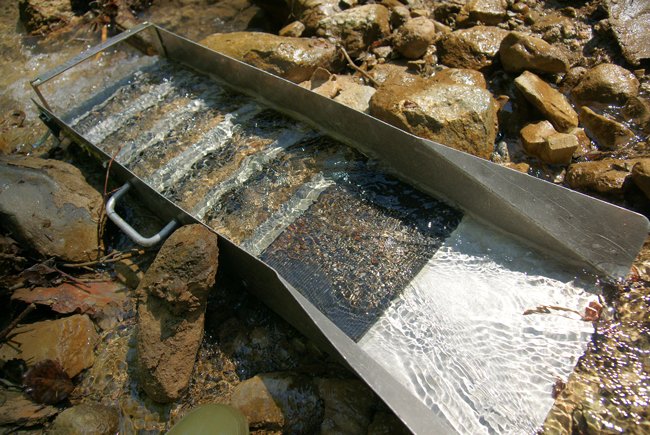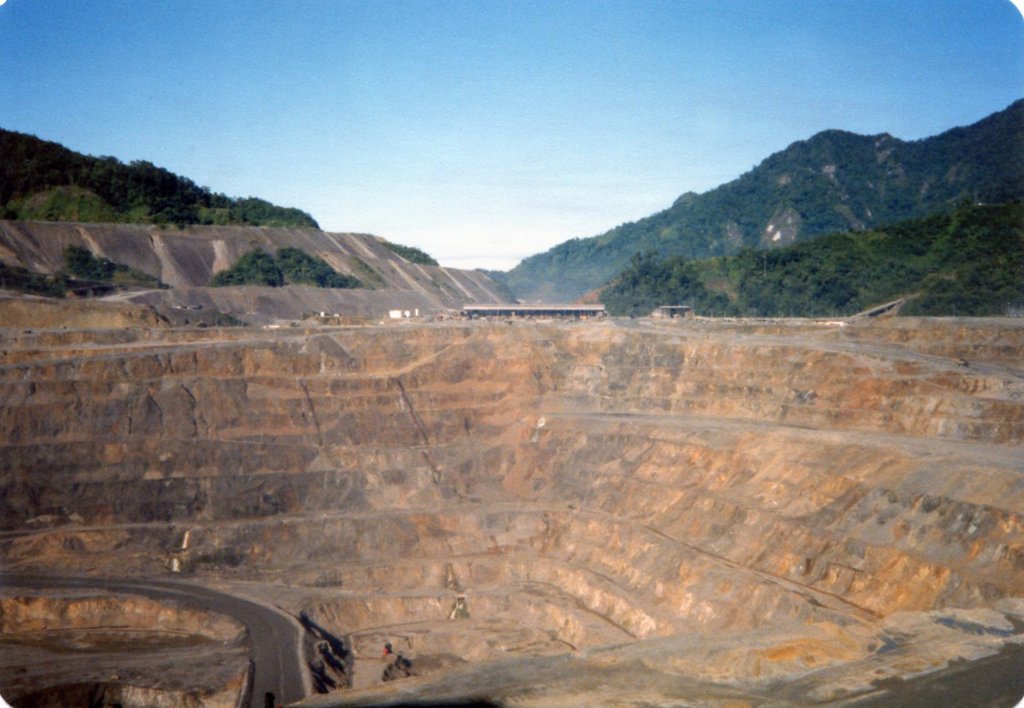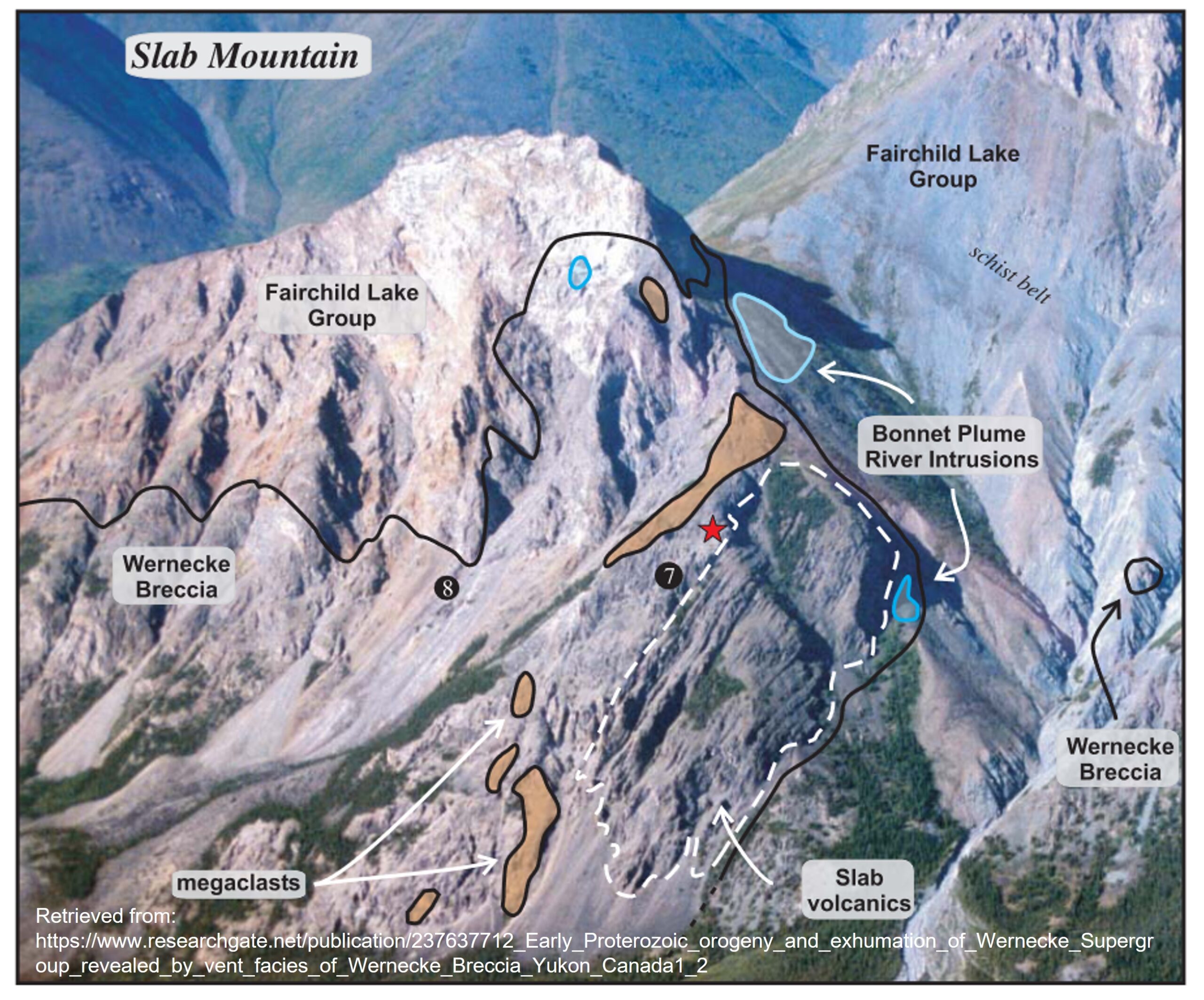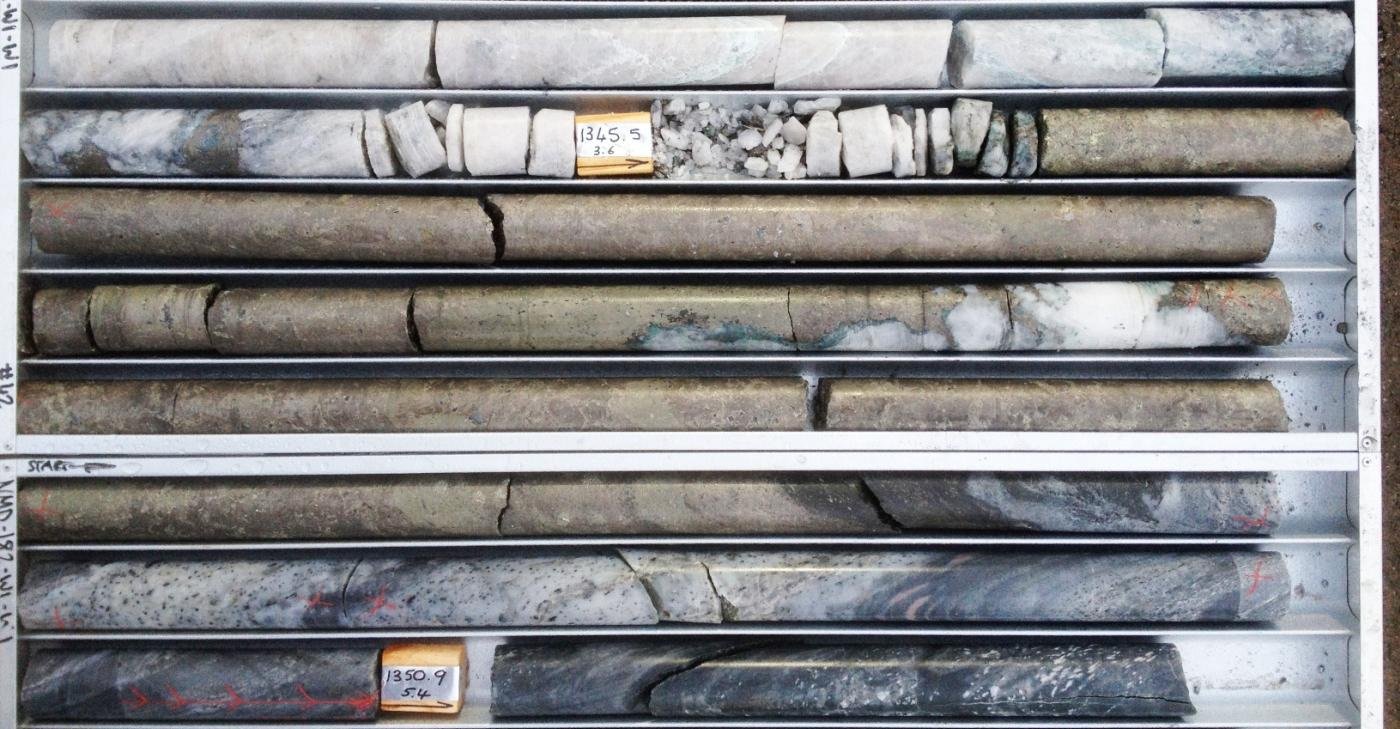Despite gold prices that would be considered ridiculously high compared those from ten year’s ago, low and moderate grade miners are struggling in this market.
[box type=”info” align=”aligncenter” ]Disclaimer: This is an editorial review of a public mining company press release and is not an endorsement. It may include opinions or points of view that may not be shared by the companies mentioned in the release. The editorial comments are highlighted so as to be easily separated from the release text and portions of the release not affecting this review may be deleted. Read more at How to Use this Site.[/box]
TORONTO, ONTARIO–(Marketwired – July 10, 2014) – Alexandria Minerals Corporation (TSX VENTURE:AZX)(FRANKFURT:A9D)(PINKSHEETS:ALXDF) is pleased to announce that it has begun a 10,000 m drill program intended to find more Akasaba-like gold-copper mineralization on the western half of its 35 km-long Cadillac Break property package in Val d’Or Quebec.
[box type=”note” align=”aligncenter” ]When we last talked about Alexandria Minerals they had just released the results from a bore-hole IP survey on their Akasaba Zone completed in the winter of 2013 and this release announces the commencement of drill-testing these anomalies.
The company has also recently released results from their winter-drilling step-out program on the Sleepy Zone. The Sleepy Zone is located 8km east of the Akasaba zone along the Cadillac Break. The Cadillac Break is a 200km long regional fault system and host to several gold projects across Ontario and Quebec. Alexandria’s Cadillac Break property package extends more than 35km along this structure.
[/box]
Drilling has commenced with one drill rig in the Akasaba mine area, initially testing downhole geophysical anomalies below the Current Resources there, to be followed by testing a large, 1,000 m long and 650 m deep, Induced Polarization (“IP”) anomaly east along strike with the mine area. The second half of this program will then focus on similar targets 5-6 km west of Akasaba, on the Company’s Oramaque, Ducros, and Annamaque projects.
[box type=”note” align=”aligncenter” ]While most geophysical surveys are performed at ground level or from the air, a “down-hole” survey makes use of existing drill holes to increase the penetration depth of the survey result beyond what could be achieved using a surface or airborne survey. The instruments are lowered down pairs of drill holes to create a powered circuit that essentially turns the rock into a huge low voltage battery. The IP response is essentially the rock’s ability to hold a charge.[/box]
Eric Owens, President and CEO, said, “This new round of drilling will be testing some of the large geological and alteration systems we have identified on our Cadillac Break Property Group, which includes Akasaba-like gold-copper targets over the western half of the property package.”
Alexandria geologists discovered significant gold-copper resources at Akasaba and the West Zone, which together make the fourth largest metal deposit in Val d’Or (See Press Release, February 7, 2013). In order to expand on this, Alexandria completed a series of surface IP surveys through Winter 2013-2014, covering 20 square-km (1,987 hectares) over 2 principal areas: the Akasaba-Valdora projects, and 6 km to the west on its Oramaque, Annamaque, and Ducros projects.
Alexandria is encouraged that the geological characteristics observed at Akasaba underlie much of the western half of its 35 km-long Cadillac Break group of properties. One of the more potentially significant targets extends for more than 5 km, which hosts historical drill assay results such as on the Ducros property as 0.23% Cu over 209 m and 0.54% Cu over 56.6 m, including 1.6% Cu over 10.9 m. Original drill core sampling for gold by previous explorers was sporadic, and a program of re-sampling of selected historic drill holes is underway to determine gold content.
[box type=”note” align=”aligncenter” ]It’s interesting that the Ducros property hosts such long intervals of low grade copper. Copper intercepts reported along the Cadillac Break tend to be higher grade (1-3%) but only over a few meters. Of course, these are historical assays and Alexandria will have to confirm this data through new work. [/box]
The estimated budget for this drill program is $600,000, and Alexandria’s cash and short term assets currently stand at $4,000,000.
[box type=”note” align=”aligncenter” ]
Alexandria’s Stock has been floating around $0.08 since May. Though they have a fair bit of cash, several 43-101 compliant gold resources and extensive property holdings along a proven gold producing region they’re going to need to start showing some higher grades if they want to move into the double digits. Why? Despite gold prices that would be considered ridiculously high compared those from ten year’s ago, low and moderate grade miners are struggling in this market. Alexandria’s shallow resources range from 1-3 g/t while their underground resource at Akasaba grades at 5.5 g/t. A few years ago that might have been enough to open a mine. Nowadays, it’s just not good enough.
[/box]
Program design, management, and Quality Control/Quality Assurance are governed by Alexandria’s exploration group of which Philippe Berthelot, P.Geo, is the Company’s Qualified Person. Mr. Berthelot has reviewed the results in this press release. The QA/QC program is consistent with NI 43-101 and industry best practices and has been previously addressed in the NI 43-101 Technical Report on the Cadillac Break properties (February 2008) as well as in subsequent NI 43-101 reports found on the Company’s website or on www.sedar.com.
[box type=”success” align=”aligncenter” ]Have a company or release you’d like us to look at? Let us know though our contact page, through Google+, Twitter or Facebook.[/box]






